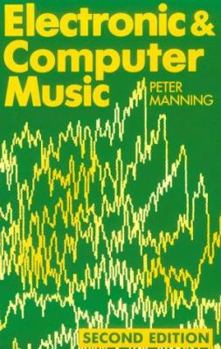Electronic and Computer Music
Select Format
Select Condition 
Book Overview
This is a revised and expanded edition of Peter Manning's classic introduction to electronic and computer music, dealing with the development of electronic and computer music from its birth to the present day. After an introductory chapter concerned with the antecedents of electronic music from the turn of the century to the Second World War, the book continues with the birth and development of the early "classical" studios of the 1950s, examined both in terms of their design philosophy and also their compositional output. A chapter devoted to the characteristics of voltage control technology leads to a study of the subsequent upsurge of creative activity, considered under three headings: tape works, live electronic music, and the early use of electronics in rock and pop music. Attention is then turned to the sphere of computer music and its evolution from the early experiments with large commercial computers to the advanced music workstations of today. This section has been significantly expanded from the first edition to take account of the rapid development of this technology since the early 1980s, in particular the introduction of MIDI and the increasing use of the personal computer as a music tool. A bibliography and an extensive discography are included. The primary objective throughout is to provide the reader with a critical perspective of the medium both in terms of its musical output and the philosophical and technical features which have shaped its growth.
Format:Paperback
Language:English
ISBN:0198163290
ISBN13:9780198163299
Release Date:December 1994
Publisher:Oxford University Press, USA
Length:408 Pages
Weight:0.05 lbs.
Dimensions:0.9" x 5.5" x 8.5"
Customer Reviews
2 ratings
Complete and Detailed
Published by Thriftbooks.com User , 15 years ago
This book is a must have in addition with the Chadabe's Electric Sound, and Holmes's Electronic and Experimental Music. Manning gets more specific about the qualities and characteristics of electronic music. A must have for those actively involved in the production, recording, technical, compositional, or performance aspects of computer music.
Technical but digestable
Published by Thriftbooks.com User , 15 years ago
This book is a nice overview of electronic and computer music (as one might gather from the title.) It's great to sit near a computer and research some of the composers and pieces discussed, as many of them are on youtube and at least sound clips are available somewhere online. You're not going to learn how to program or compose from this book, but it's great for getting a decent background of what went on from 1890-1990.






